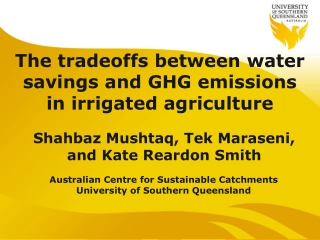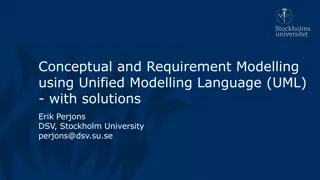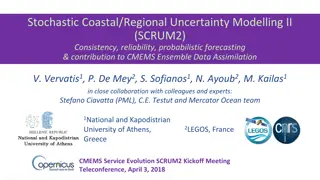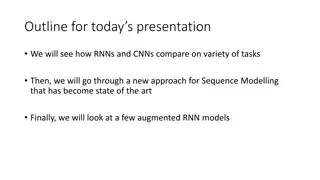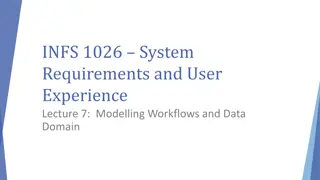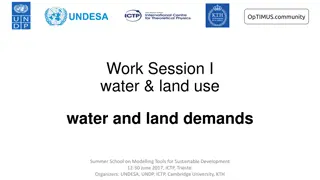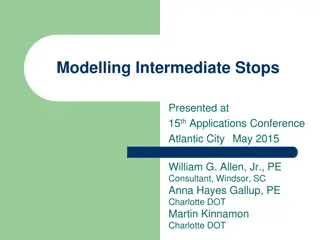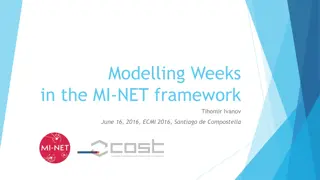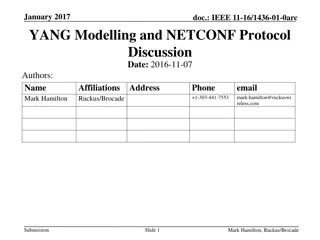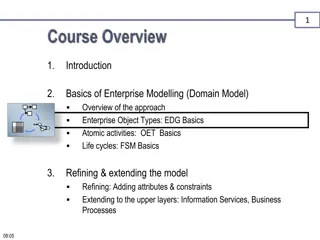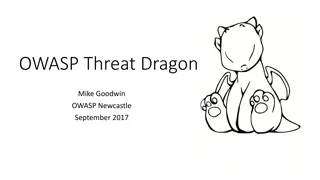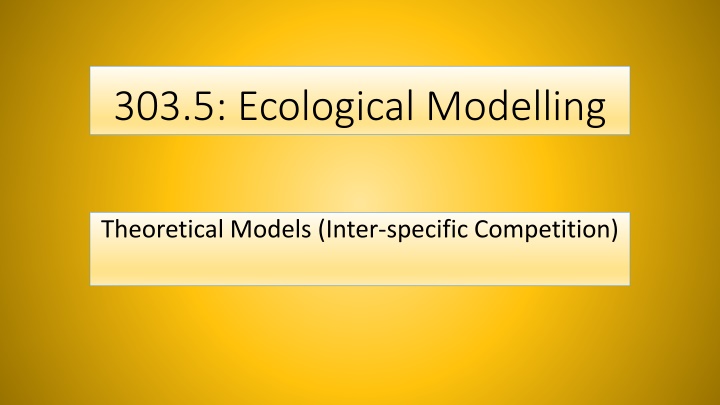
Ecological Modelling: Theoretical Insight into Inter-specific Competition
Dive into the world of ecological modelling, a mathematical abstraction of ecological systems, ranging from individual populations to entire biomes. Explore how ecosystem models are used to predict real system dynamics and learn about the theoretical models like Lotka-Volterra for inter-specific competition presented by Riclefs and Miller.
Download Presentation

Please find below an Image/Link to download the presentation.
The content on the website is provided AS IS for your information and personal use only. It may not be sold, licensed, or shared on other websites without obtaining consent from the author. If you encounter any issues during the download, it is possible that the publisher has removed the file from their server.
You are allowed to download the files provided on this website for personal or commercial use, subject to the condition that they are used lawfully. All files are the property of their respective owners.
The content on the website is provided AS IS for your information and personal use only. It may not be sold, licensed, or shared on other websites without obtaining consent from the author.
E N D
Presentation Transcript
303.5: Ecological Modelling Theoretical Models (Inter-specific Competition)
An ecosystem model is an abstract, usually mathematical, representation of an ecological system (ranging in scale from an individual population, to an ecological community, or even an entire biome), which is studied to better understand the real system. Using data gathered from the field, ecological relationships such as the relation of sunlight and water availability to photosynthetic rate, or that between prey populations are derived, and these are combined to form ecosystem models. These model systems are then studied in order to make predictions about the dynamics of the real system. predator and
Model Simulation Analytical Theoretical (Mathematical or Statistical) Dynamic Static
Source of figures and equations: Bagon M, Townsend CR and Harper JL (2006), Ecology: From Individuals to Ecosystems, 4th Edition, Blackwell Publishing
Similar interpretation of Interspecific competition model of Lotka-Volterra is being explained in a different approach by Riclefs and Miller in their book Ecology
The per capita growth rate of species i (1/N,d.N/ dt) as a function of its population, N, and the size of a competing population (N1) . The shaded area is the plane containing all possible combinations of the population and its competitor (N;, N). The line where the shaded area intersects the plane is called the equilibrium isocline, which contains all combinations (N,, Nj) for which the growth rate is zero. Points on the plane above the isocline (e.g., point A) represent positive growth, and points below the isocline (e.g., point B) represent negative growth. Source: Riclefs RE and Miller GL, Ecology, 4th Edition, WH Freemans Company, New York
Overall, therefore, the LotkaVolterra model of interspecific competition is able to generate a range of possible outcomes: the predictable exclusion of one species by another, exclusion dependent on initial densities, and stable coexistence. Each of these possibilities will be discussed in turn, alongside the results of laboratory and field investigations. Three outcomes from the model correspond to biologically reasonable circumstances. The model, therefore, in spite of its simplicity and its failure to address many of the complexities of the dynamics of competition in the real world, serves a useful purpose. Before we move on, however, one particular shortcoming of the Lotka Volterra model is worth noting. The outcome of competition in the model depends on the Ks and the s, but not on the rs, the intrinsic rates of increase. These determine the speed with which the outcome is achieved but not the outcome itself. This, though, seems to be a result peculiar to competition between only two species, since in models of competition between three or more species, the Ks, s and rs combine to determine the outcome (Strobeck, 1973).


